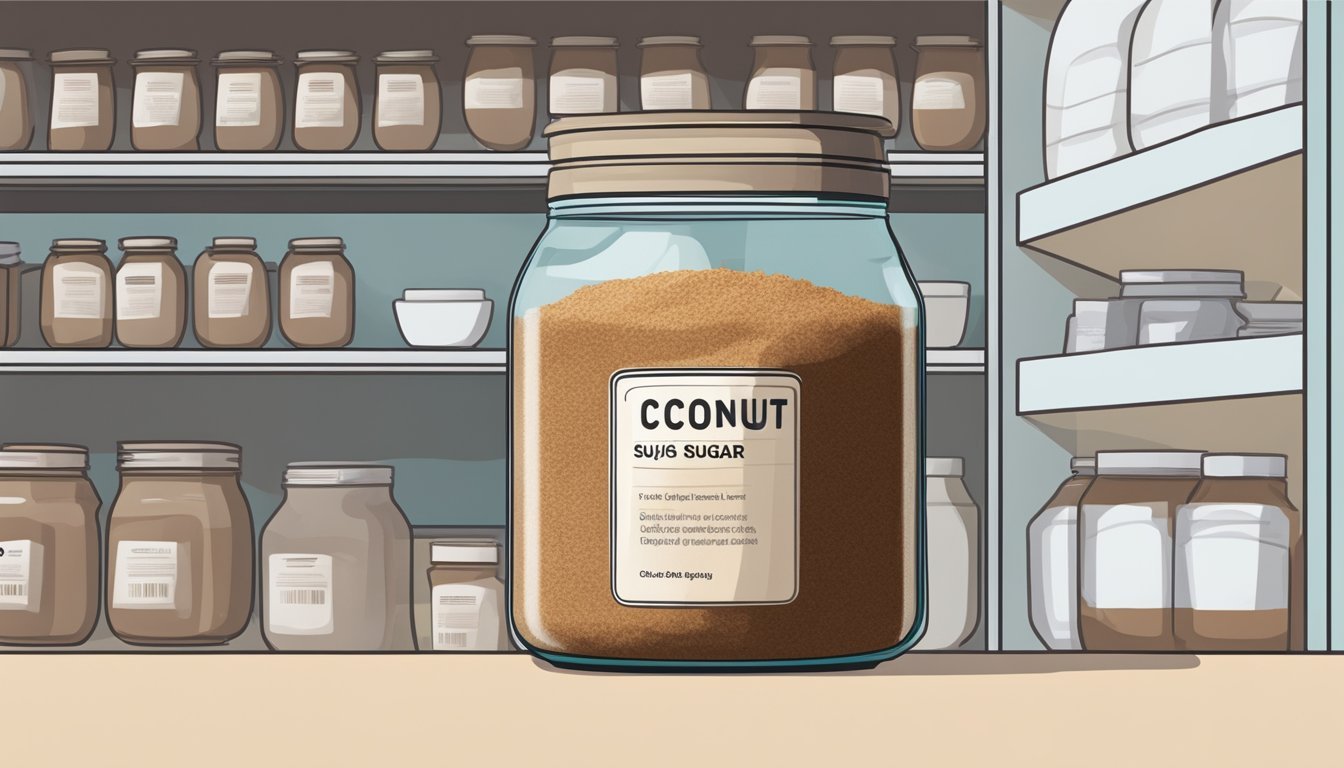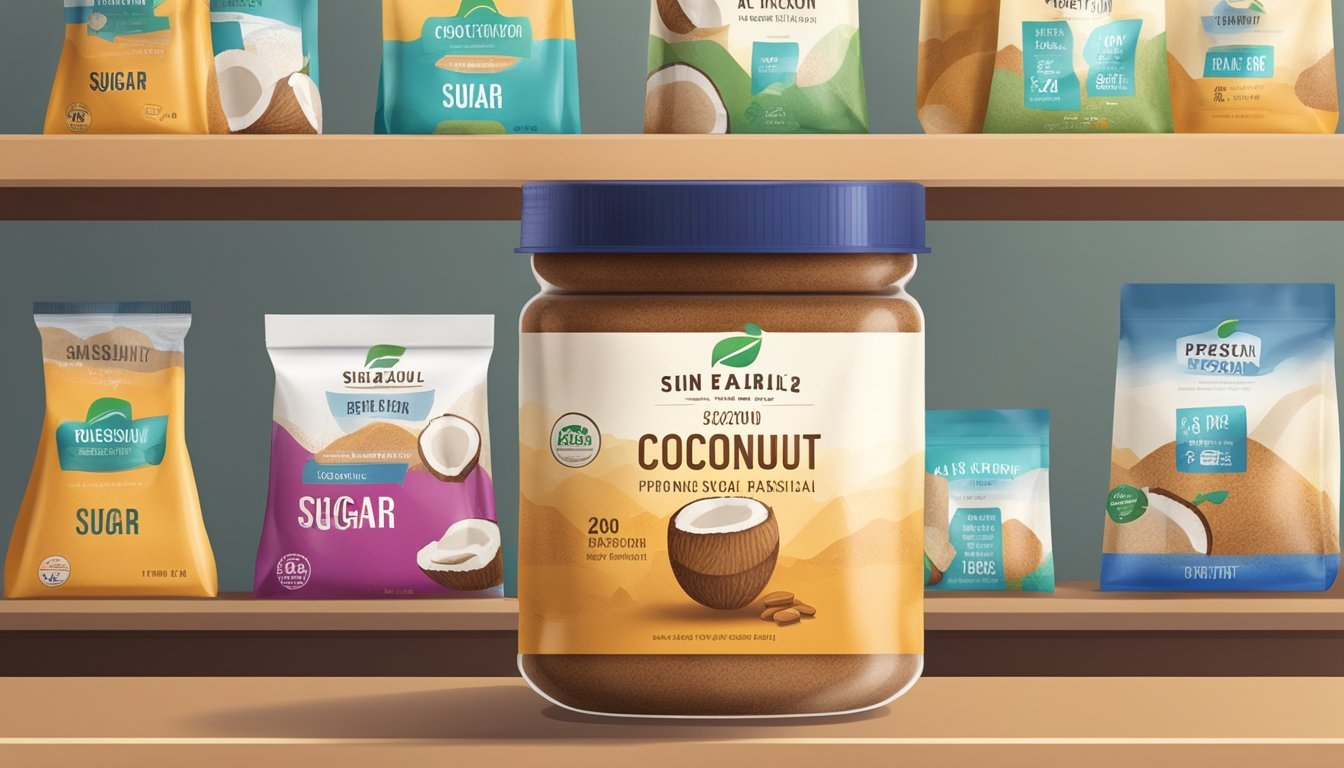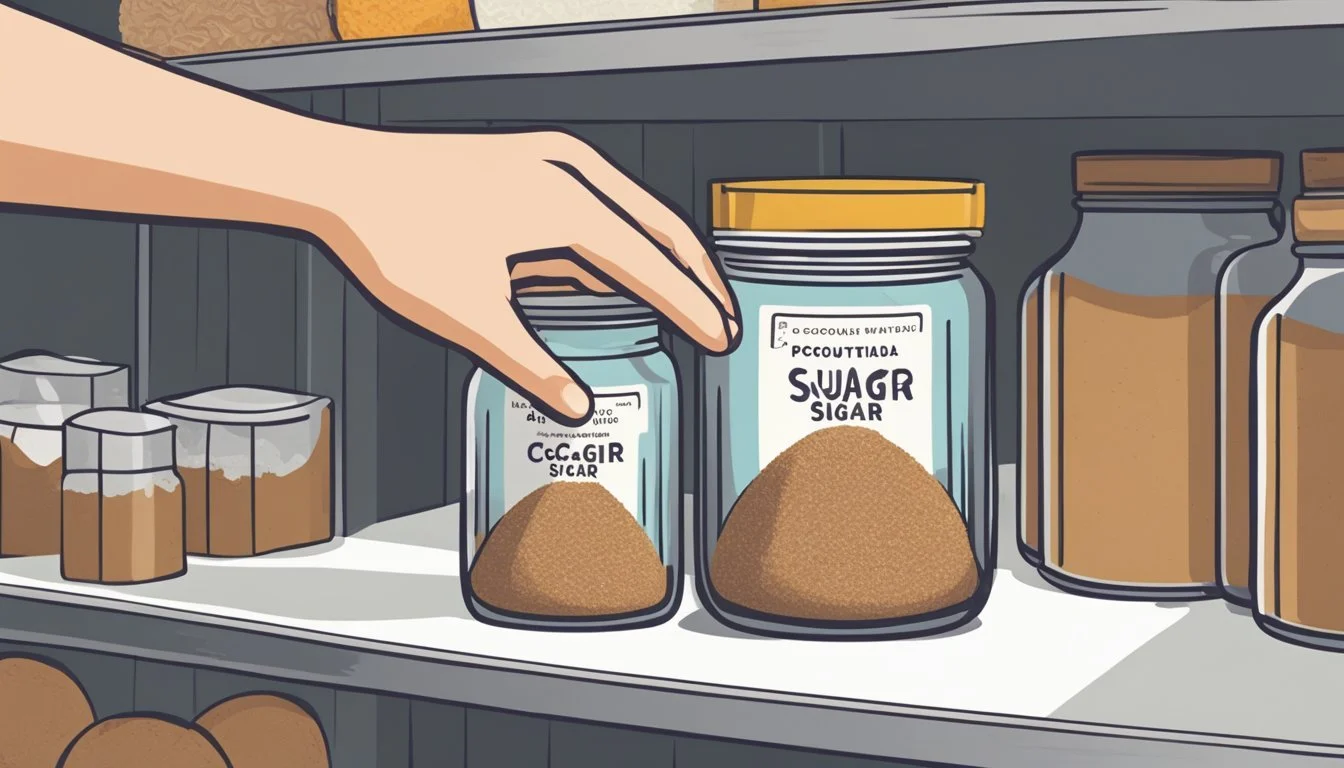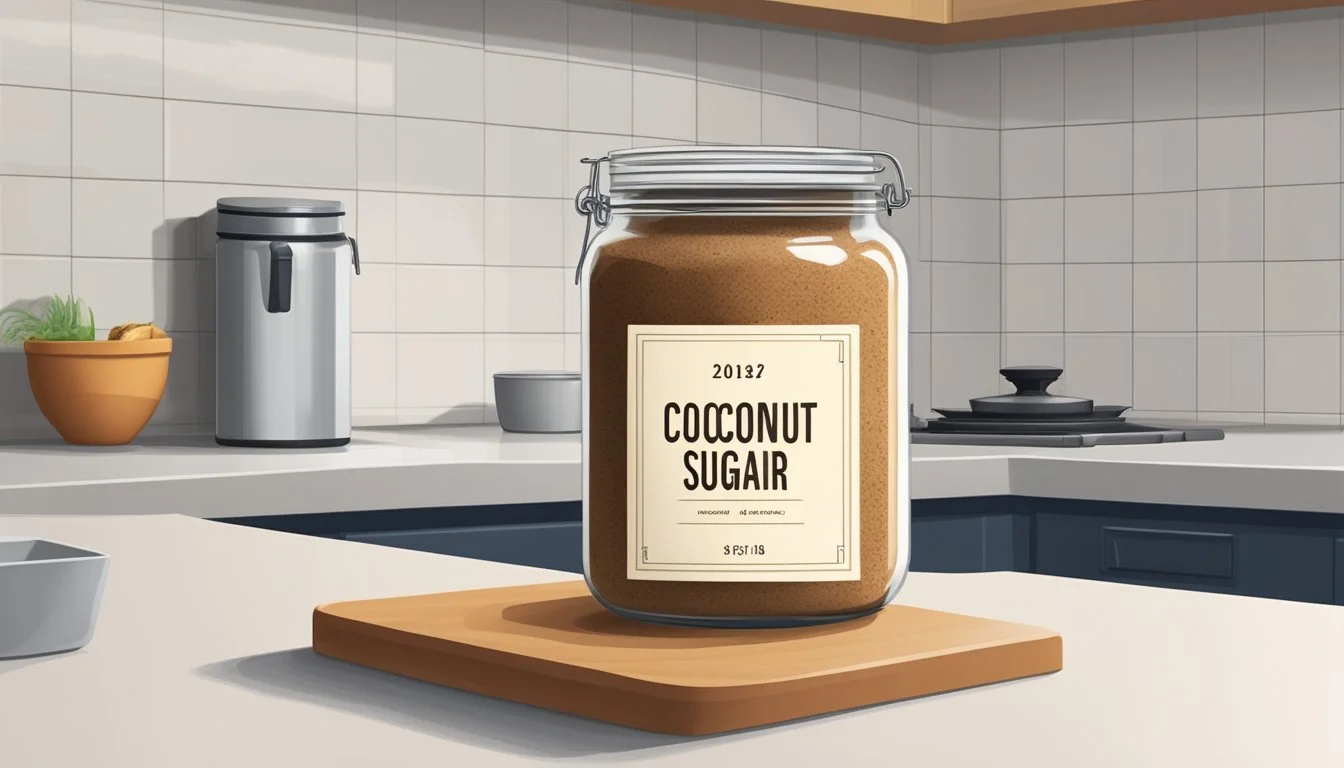How Long Does Coconut Sugar Last?
Shelf Life and Storage Tips
Coconut sugar (how long does sugar last?), appreciated for its natural sweetness, has risen in popularity as a preferred alternative to refined sugars. Derived from the sap of the flower bud stem of the coconut palm, this caramel-like sweetener is not only sought for its taste but also for the health benefits it is perceived to provide. It contains trace amounts of minerals such as iron, zinc, calcium, and potassium, along with some short-chain fatty acids, polyphenols, and antioxidants.
The shelf life of coconut sugar is a point of interest for consumers who prefer its less processed nature and its subtle hint of caramel flavor. Typically, coconut sugar can last up to two years when unopened and up to 18 months to two years after opening. The longevity of its quality depends on proper storage conditions, which involve keeping it in a cool, dry place, ideally between 60°F to 75°F to prevent moisture absorption and clumping.
Ensuring the sugar is stored in an airtight container also helps maintain its quality by preventing exposure to external elements that could lead to spoilage. In a stable environment, coconut sugar's granular nature and low moisture content contribute to its durability, making it a reliable sweetener that retains its taste and beneficial properties over time.
What Is Coconut Sugar?
Coconut sugar, also known as coconut palm sugar, is a natural sweetener derived from the sap of the flower bud stem of the coconut palm tree. The process begins with making an incision on the flower bud stem to extract the sap. Once collected, the sap is heated until most of the water has evaporated, leaving behind the granulated brown sugar that has a caramel-like flavor.
This sugar is considered by many to be a healthier alternative to regular white sugar due to its nutritional content. It contains trace amounts of vitamins and minerals such as iron, zinc, and antioxidants, which are not present in significant amounts in conventional table sugar.
One of the characteristics of coconut sugar that contributes to its growing popularity is the glycemic index (GI). This index measures how quickly foods raise blood sugar levels. Coconut sugar has a lower glycemic index compared to regular sugar, which means it may cause a slower rise in blood sugar levels.
However, it's important to understand that while coconut sugar does provide some nutrients, they are present in minor amounts. One should not rely on coconut sugar as a significant source of nutrition, but rather as a more natural, less-processed sweetener that can replace conventional sugar in moderation.
Shelf Life Determinants
The longevity of coconut sugar is significantly influenced by environmental conditions and the storage methods applied. Understanding these factors is crucial for maximizing its shelf life.
Environmental Factors
Temperature and humidity are pivotal environmental factors that affect coconut sugar's shelf life. Exposure to high humidity can make coconut sugar hygroscopic, meaning it absorbs moisture from the environment, leading to clumping or hardening. Similarly, high temperatures can degrade the quality over time. Ideally, coconut sugar should be stored in a cool and dry location, away from direct sunlight and heat sources to prevent these adverse effects.
Storage Methods
Proper storage methods are essential to prevent moisture and air exposure, which can compromise coconut sugar's shelf life. Using an airtight container is recommended to prevent moisture from seeping in and to minimize air exposure. Coconut sugar should be kept in a dry place, as prolonged exposure to moisture can not only lead to clumping but may also introduce health risks if mold growth occurs. By controlling these storage conditions, one can ensure that coconut sugar remains in its best state for consumption.
Proper Storage Practices
Proper storage of coconut sugar ensures its longevity and maintains its quality. Using the right containers and storing in optimal conditions while preventing contaminants are key practices for preserving coconut sugar.
Best Containers
For coconut sugar, the choice of container is crucial. Airtight containers are ideal as they prevent moisture, which can lead to clumping, and protect against bugs and odor contamination. Glass jars with sealed lids or heavy-duty plastic containers with snap-on lids are excellent options.
Location and Conditions
The location for storing coconut sugar should be a cool and dry place such as a cupboard or pantry. Avoid areas where the sugar might be exposed to heat or direct sunlight. Refrigeration is not recommended as it can introduce moisture. Instead, opt for a consistent location that's away from sources of heat and light, ensuring the coconut sugar remains in a cool, dark place to prevent degradation.
Preventing Contaminants
Coconut sugar should be kept properly sealed when not in use to prevent contaminants. Ensure the seal is strong to avoid exposure to air, which can introduce moisture and contaminants that may affect the sugar's quality. Regularly check for signs of clumping or spoilage, and if necessary, sift the sugar before use to eliminate clumps and ensure a fine consistency.
Identifying and Handling Spoilage
Coconut sugar’s longevity depends heavily on proper storage and timely assessment for spoilage. Herein lies an outline of spoilage indicators and steps to prevent them, ensuring coconut sugar maintains its quality for as long as possible.
Signs of Spoilage
Color and Texture Changes: While coconut sugar naturally clumps due to moisture, a significant hardening or change in color may indicate spoilage. Users should look for any signs of mold, which can introduce bacteria, potentially leading to food poisoning if consumed.
Mold Presence: Any visible mold growth should be taken as a clear sign of spoilage.
Unusual Odors: A rancid or off-putting smell is indicative of bacterial growth and spoilage.
Preventive Measures
Storage: To prolong the shelf life and prevent spoilage, coconut sugar should be stored properly in a cool, dry place. Refrigeration is not required but can be used if a consistently dry environment isn't available.
Airtight Containers: Use airtight containers to protect the sugar from moisture and contaminants.
Check Regularly: Regular checks for signs of spoilage can prevent the use of bad sugar and potential waste.
By adhering to these guidelines, the risk of spoilage can be significantly reduced, and the quality of coconut sugar preserved.
Estimated Shelf Life
The shelf life of coconut sugar is influenced by storage conditions and whether the packaging has been opened. Manufacturers typically provide an expiration date, but coconut sugar can often remain safe to use beyond this period if stored correctly.
Unopened Packaging
An unopened package of coconut sugar can typically last for up to two years. This duration reflects the product's stability due to its low moisture content and natural preservative properties. Some sources suggest that, when kept in ideal conditions, its shelf life could extend indefinitely.
Recommended Storage Conditions:
Keep in a cool, dark place
Avoid exposure to direct sunlight and heat
After Opening
Once opened, coconut sugar should maintain its freshness for up to 1-2 years. To maximize its shelf life after opening, strict storage practices should be followed. The absence of preservatives in coconut sugar means that proper care is essential to prevent moisture absorption and clumping.
Ideal Storage Tips:
Store in an airtight container
Maintain in a dry environment
Do not refrigerate
By adhering to these guidelines, consumers can ensure the longevity and preserved quality of their coconut sugar.
Usage Tips for Maximum Freshness
When cooking or baking with coconut sugar, its freshness can significantly influence the outcome of recipes and the flavor of baked goods and beverages. To maintain coconut sugar in its peak condition, they should follow these storage tips:
Storage Environment: Coconut sugar thrives in a cool, dry place, at temperatures between 60°F to 75°F. Excessive heat can cause it to melt, while cold temperatures can lead to hardening.
Airtight Containers: Store coconut sugar in airtight containers to prevent moisture from clumping the sugar and to preserve its distinct flavor.
Substitution: They can use coconut sugar as a 1:1 substitute for granulated sugar, white sugar, or brown sugar in recipes. However, its unique taste may alter the final flavor profile slightly.
Don’t Do Expose to direct sunlight Keep in a pantry or cupboard Leave open to air Seal tightly after each use Store near strong odors Place in an odor-free environment
Coconut sugar is praised for being a more natural and less refined alternative sweetener, which can be a benefit to their health compared to traditional sugars. Preserving its freshness ensures that they retain these benefits and the sugar's distinct flavor when it's incorporated into their dietary choices. With proper storage and handling, coconut sugar can remain fresh and usable for a considerable time, potentially up to two years after opening.
Common Questions and Misconceptions
When discussing coconut sugar, questions often arise about its longevity, quality indicators, and health implications compared to other sweeteners. Misconceptions can lead to improper use or disposal of this natural sweetness provider.
Shelf Life Myths
Myth: Coconut sugar never expires.
Fact: While coconut sugar doesn't spoil like perishable food, its quality may diminish over time. Properly stored in a cool, dark place in an airtight container, coconut sugar has an estimated shelf life of 18-24 months. It does not contain preservatives that extend shelf life beyond this range.
Quality Indicators
To assess if coconut sugar is still good to use, one should look for:
Clumping: Indicates moisture exposure but may still be safe to consume.
Discoloration: Could suggest contamination but isn't always harmful.
Odor: A change could mean it's absorbed smells from the environment; however, the sugar might remain safe.
Health-Focused Queries
Inquiries often arise regarding coconut sugar as a sugar alternative. It's seen as a healthier option due to its inulin fiber content, lower glycemic index, and presence of vitamins and minerals, unlike refined sugar. Its health benefits are not an excuse for overconsumption, as it is still a form of sugar. One should always consider the context of their overall diet when evaluating natural sweetness sources.
Alternatives and Comparisons
When considering alternative sweeteners to coconut sugar, there are several options that vary in texture, flavor, and nutritional content. It's important to understand how these alternatives compare to coconut sugar, especially in terms of their longevity and potential role as healthier options.
Brown Sugar: A common substitute, brown sugar is refined granulated sugar with added molasses. Its shelf life is comparable to that of coconut sugar, typically lasting around two years if stored properly.
Table Sugar: The most widely used sweetener, table sugar or white sugar, is highly refined and generally lasts indefinitely under proper storage conditions. However, it lacks the trace minerals found in coconut sugar.
Coconut Flour: Not a direct substitute for coconut sugar as it is not a sweetener, but a gluten-free alternative for flour in baking that carries a mild coconut flavor.
Healthier Alternatives: While coconut sugar contains some nutrients that refined sugars do not, it is still high in fructose and should be consumed in moderation. Alternatives include:
Stevia: A natural, calorie-free sweetener.
Monk Fruit Sweetener: Known for its no-calorie content and potential as a healthful alternative to traditional sweeteners.
Granulated Sugar Comparisons:
Sweetener Similarity to Coconut Sugar Shelf Life Nutritional Value Brown Sugar High ~2 Years Moderate Table Sugar Low Indefinite Low Stevia Low 2-5 Years None (Calorie-Free) Monk Fruit Low 1-2 Years None (Calorie-Free)
Each of these alternatives serves a different dietary need and kitchen application, so it's essential to select the sweetener that represents the best match for the intended usage and health considerations.
Additional Considerations
When it comes to extending the shelf life of coconut sugar and maintaining its quality, there are some key strategies one can employ. Alongside this, there are alternative products one might consider if they're looking into similar sweetening solutions.
Problem-Solving Tips
Clump Prevention: Coconut sugar has a tendency to clump or become rock-hard over time due to moisture exposure. To prevent this, one should store coconut sugar in an airtight container. Freezing coconut sugar is a viable option to help maintain its granular consistency. However, coconut sugar should be brought to room temperature before being used to avoid any complications in recipes.
Reviving Hardened Sugar: If coconut sugar becomes clumpy or rock-hard, a food processor can break down the lumps and restore it to a usable state. Alternatively, placing a damp paper towel in the container and microwaving it on low for a few minutes can soften the sugar.
Related Products and Recommendations
Alternative Sweeteners: For individuals seeking sweeteners with lower glycemic indexes or different flavor profiles, options such as agave nectar, honey, or turbinado sugar are popular. Their popularity often stems from health or wellness trends. When purchasing these products, one might encounter affiliate links; using these links can lead to the site earning a small commission without additional cost to the buyer.
Preservation Tools: Investing in a good quality food sealer can be a beneficial recommendation for preserving not only coconut sugar but other pantry staples as well. Additionally, labels that denote the date of opening can help track freshness if the original packaging is disposed of.










